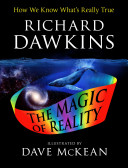The Parallax Method
It is possible to measure how far away from us each galaxy is. How? How, for that matter, do we know how far away anything in the universe is? For nearby stars the best method uses something called 'parallax'. Hold your finger up in front of your face and look at it with your left eye closed. Now open your left eye and close your right. Keep switching eyes, and you'll notice that the apparent position of your finger hops from side to side. That is because of the difference between the viewpoints of your two eyes. Move your finger nearer, and the hops will become greater. Move your finger further away and the hops become smaller. All you need to know is how far apart your eyes are, and you can calculate the distance from eyes to finger by the size of the hops. That is the parallax method of estimating distances.
Now, instead of looking at your finger, look at a star out in the night sky, switching from eye to eye. The star won't hop at all. It is much too far away. In order to make a star 'hop' from side to side, your eyes would need to be millions of miles apart! How can we achieve the same effect as switching eyes millions of miles apart? We can make use of the fact that the Earth's orbit around the sun has a diameter of 186 million miles. We measure the position of a nearby star, against a background of other stars. Then, six months later, when the Earth is 186 million miles away at the opposite side of its orbit, we measure the apparent position of the star again. If the star is quite close, its apparent position win have 'hopped'. From the b length of the hop, it is easy to calculate how far away the star is.
Notes:
Using the change in position of an object when viewed from two different points can be used to determine its distance from you.
Folksonomies: measurement parallax
Taxonomies:
/science/medicine/surgery (0.454750)
/food and drink/beverages/alcoholic beverages/cocktails and beer (0.453897)
/technology and computing/consumer electronics/camera and photo equipment/telescopes (0.378171)
Keywords:
apparent position (0.939700 (negative:-0.429194)), parallax method (0.753004 (positive:0.622434)), eyes (0.680562 (positive:0.053381)), apparent position win (0.680339 (neutral:0.000000)), finger (0.662365 (negative:-0.330498)), star (0.635267 (negative:-0.125302)), different points (0.497263 (positive:0.622434)), nearby stars (0.454335 (positive:0.556766)), best method (0.451715 (positive:0.556766)), night sky (0.451656 (positive:0.372814)), left eye (0.437207 (negative:-0.462442)), hops (0.430439 (positive:0.121021)), star 'hop' from side to side, your eyes would need to be millions of miles apart! (0.414950 (neutral:0.000000)), miles (0.411267 (negative:-0.230492)), nearby star (0.405652 (neutral:0.000000)), distance (0.325222 (positive:0.462831)), millions (0.317695 (negative:-0.217824)), orbit (0.315882 (negative:-0.243159)), Earth (0.299541 (negative:-0.243159)), galaxy (0.267458 (negative:-0.465840)), viewpoints (0.264122 (neutral:0.000000)), change (0.263455 (positive:0.622434)), object (0.263367 (positive:0.622434)), universe (0.261776 (neutral:0.000000)), matter (0.261119 (neutral:0.000000)), distances (0.260861 (neutral:0.000000)), right (0.260241 (positive:0.432093)), difference (0.259746 (neutral:0.000000)), face (0.255770 (negative:-0.462442)), diameter (0.255131 (neutral:0.000000))
Entities:
186 million miles:Quantity (0.010000 (neutral:0.000000)), six months:Quantity (0.010000 (neutral:0.000000))
Concepts:
Star (0.984604): dbpedia | freebase | opencyc
Astronomical unit (0.897145): dbpedia | freebase | yago
Milky Way (0.862771): dbpedia | freebase | opencyc | yago
Earth (0.647296): dbpedia | freebase
Sun (0.623423): dbpedia | freebase | opencyc
Galaxy (0.583371): dbpedia | freebase | opencyc
Proxima Centauri (0.580051): dbpedia | freebase | yago
Planet (0.579067): dbpedia | freebase | opencyc





